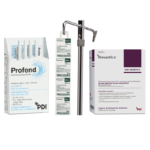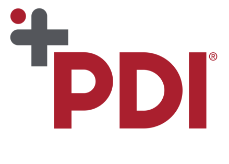Interventional Care


We notice that you are visiting us from . This site only services US-based visitors. Would you like to visit the site that is appropriate for your location?

While recent reports may suggest that the workforce shortage in healthcare is not only dire, but a recent phenomenon, this is not entirely correct. The United States is currently in its longest tenure of a nursing shortage in well over a hundred years, and a physician shortage of upwards of 124,000 practitioners was projected to occur over the next 12 years – both measures were pre-pandemic 1, 2. The shortage is not limited to doctors and nurses but extends to all manner of hourly front-line staff, including building and service engineers as well as environmental service professionals 3. The effect is both deleterious to patient safety as well as compounding with the constraints of the current workforce lending itself to burnout.
Staffing shortages do not readily lend themselves to turn-key solutions. While agency staffing and contractors can help fill the gaps, few would argue that these are long-term or financially sustainable solutions. Year to date, labor expense per adjusted discharge, in acute care is up 13.6% over the prior year4. In times of crisis, when the resources are simply not available, long-term gains may be made by re-examining and potentially re-designing the work system: work smarter, not harder.
In the environmental surface disinfection space, there are product and training solutions that can help ease the burden. Ready-to-use surface disinfection wipes eliminate the need for environmental service professionals to gather multiple materials, dilute a concentration and having quality control confirm the appropriateness of the dilution. These same single-use wipes eliminate rental charges or reprocessing costs for microfiber cloths.

Standardizing to a single non-bleach sporicidal with claims for Clostridiodes difficile, such as PDI Sani-HyPerCide® disinfectants, eliminates the complexity of deploying multiple disinfectant solutions in the same physical space without compromising surface compatibility. Color-coded canisters of disinfectant wipes with prominently displayed wet/kill/contact times reduce the potential for confusion and decision-making. Quick, effective online instructions for use (IFU) videos afford remote learning/training as new employees are hired.
Burdensome workloads lend themselves to four main categories of outcomes- none of which you want to experience on either side (employee or patient) of the healthcare industry: less time, less attention to details, more stress, and more shortcuts5. Here is where product innovation can ease some of the burdens.

Traditional healthcare-grade disinfectants cannot be re-applied as often as one would aspire to without limitless time and resources. Supplemental disinfection strategies, in particular PDI’s Tru-D® UVC disinfection can supplement traditional surface disinfection. The single placement positioning leaves operators free to complete other tasks during the disinfection process, thus maximizing productivity and minimizing room turnover time as well as labor costs.
For the clinician end user of PDI’s interventional care line, Profend® Nasal Decolonization Kit has the shortest application time of similar products in the U.S. market at 60 seconds per patient pre-operatively. Compared with the traditional 5-day, twice-daily application of mupirocin, antiseptic decolonization is clinician applied, verified, and is not antibiotic restistant.
Without the concern for increasing resistance, some organizations have opted to pursue a universal decolonization approach thereby potentially negating the need for (and time/expense incurred) Staphylococcus screening procedures. A simplified and standardized work system can conserve both time and expense all while increasing compliance and reducing patient risk.
The workforce shortages and challenges wrought will not dissipate anytime soon. While we are limited in our ability to manage these circumstances, how we adjust or respond to them is within our control. An exploration of current practice within our work systems, identifying opportunities, and implicating sustainable improvements to simplify, standardize and optimize our resources can maximize success in mitigating the risk of healthcare-associated infections.